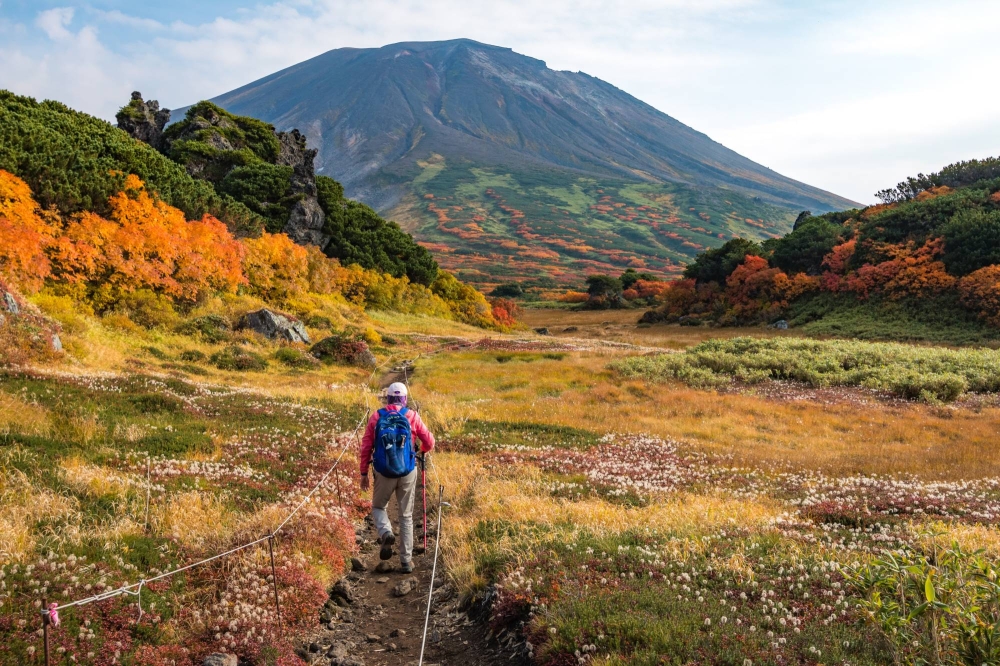If you are a nature-loving mountain climber, cyclist, snowboarder or even a casual hiker, chances are that pieces of outdoor clothing you wear are made from or coated with “forever chemicals.”
PFAS have been used for decades due to their unique ability to repel water, oil and stains. But the chemicals, of which there are at least 4,700 types, remain in the environment for years, and some have been linked to cancer.
Now, as regulators worldwide move toward tightening regulations on PFAS, or perfluoroalkyl and polyfluoroalkyl substances, the fashion industry is facing pressure to change.
While the scale of impact remains hard to predict, it is likely to eventually affect every player in the industry’s supply chain, including apparel brands, textile manufacturers and retailers. The pressure is especially acute in the outdoor clothing and footwear industry, where the chemicals are used in everything from rain jackets to ski gear and running shoes.
That could be a particular problem for Japan, which boasts a number of globally renowned outdoor brands and related suppliers, although some such as Montbell are already taking steps to address the PFAS issue.
Japanese businesses across all industries have been generally slow to respond to pressure to go PFAS-free, partly because it’s so hard to find substitutes and domestic regulations are late in coming. But as companies become more globally interconnected, Japanese players cannot remain aloof to international regulatory trends, experts say.
Toxic reputation
The Japanese government has so far only banned the use of PFOA and PFOS, which are PFAS subgroups, and it plans to ban PFHxS in June, in accordance with the Stockholm Convention on Persistent Organic Pollutants, of which it is a signatory.
In Japan, few epidemiological studies have been conducted to examine how PFAS chemicals affect people’s health, making research-based policy decisions difficult, says Ryunosuke Funahashi, a consultant at Mitsubishi Research Institute who has followed global PFAS regulations.

Skiers at the Niseko Tokyu Grand Hirafu in Kutchan, Hokkaido, on Dec. 23. Outdoor apparel consumers spend a lot of time in nature and are generally more environmentally conscious, but are likely to be using products that have a big environmental footprint.
| Bloomberg
Across the Pacific, numerous U.S. states are planning to ban the entire class of PFAS used in textiles, following activist campaigns and lawsuits drawing attention to the use of toxic chemicals.
California, for example, has decided to ban PFAS in almost all textiles by 2025, while the state of New York is on course to restrict the substances in apparel and Colorado will ban them in upholstered furniture.
Safer States, a coalition of environmental health groups in the U.S., expects that the banning of PFAS will continue this year, with at least 35 states introducing policies. Meanwhile, the European Union is considering a ban covering over 10,000 PFAS compounds as a whole.
“Globally, consumers’ concerns about the harmful effects of PFAS in fashion have increased in recent years,” says Marguerite LeRolland, industry manager of apparel and footwear at Euromonitor, a London-based market research firm.
LeRolland cited the case of Thinx, a U.S. underwear-maker that last year settled a class-action lawsuit by people who said its period underwear contained PFAS. The plaintiffs claimed it posed a health hazard to both the female body and the environment.
“Even (though) Thinx settled the legal case in January 2023, and has reviewed its supply chain more thoroughly to prevent the use of any harmful chemical in its products, the public scandal has been a blow on its reputation,” LeRolland said. “We are seeing more claims such as ‘PFAS-free’ or ‘nontoxic’ by other brands in the underwear category.”
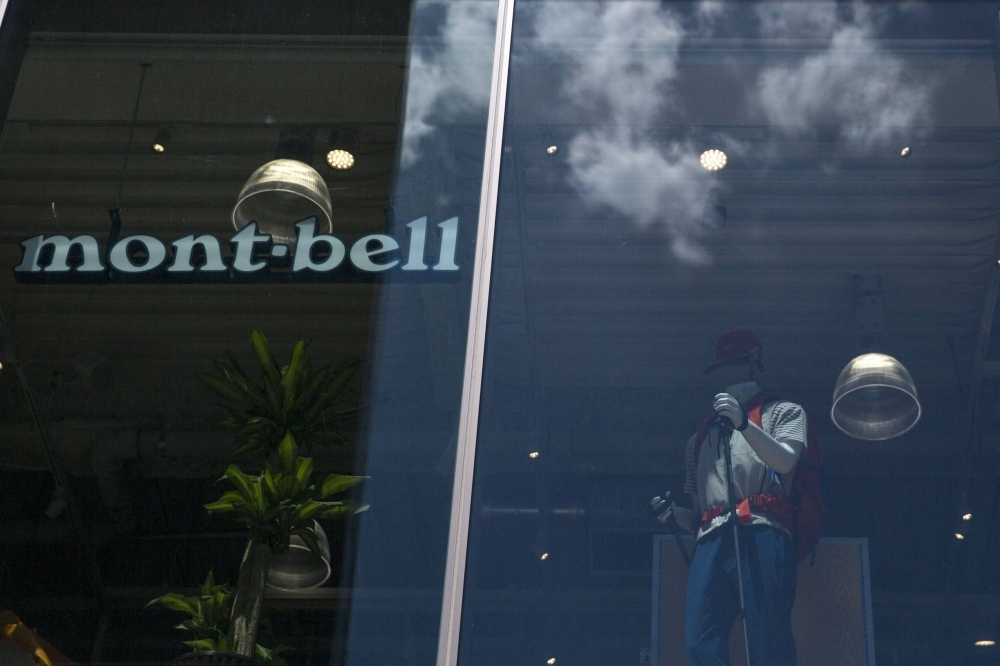
Montbell says that it is currently developing new materials that contain no PFAS, with stricter future regulations in mind.
| Bloomberg
Such pressures are a boon for some businesses eyeing an entry into the apparel industry.
London-based startup Amphico has developed a fully recyclable, PFAS-free textile for use by outdoor and sports clothing brands. The firm, which has received funding from major Nagoya-based textile trader Toyoshima, aims to start mass production of its breathable, water-repellent product in Europe and Japan this year.
Jun Kamei, a material science researcher-turned-entrepreneur who founded Amphico in 2018, says the firm has adopted “biomimicry” — the idea of learning from and mimicking strategies found in nature.
The firm’s Amphitex textile, made from polyolefin, is inspired by the structure of the lotus plant, the leaves of which are known for their ability to repel water drops with nanoscopic, uneven structures on their surface.
Kamei says that the firm chose to target the outdoor apparel market in particular after observing a big contradiction in the industry: Consumers spend a lot of time in nature and are generally more environmentally conscious, but are likely to be using products that have a big environmental footprint.
“I thought that this contradiction, combined with the regulatory pressure, could be a driving force behind a shift to new products — and opportunities for new entrants and small startups like us,” he says.
Brands taking action
Global outdoor clothing brands are addressing the issue, but their approaches and how they publicize their stance vary.
U.S.-based W.L. Gore & Associates, whose signature windproof and water-resistant membrane Gore-tex has been adopted by clothing manufacturers worldwide, says that it will work on eliminating PFAS chemicals that could pose an environmental threat. The Gore-tex membrane, the firm’s core technology, is made from PTFE, a PFAS chemical. Gore-tex considers it to be nontoxic.
“PTFE is not a PFC of Environmental Concern,” the firm states on its website, referring to per- and polyfluorinated chemicals. “PTFE is safe and environmentally sound. This fluoropolymer is highly stable, too large to be bioavailable, insoluble in water, and does not degrade in the environment. Therefore, it is not a PFC of Environmental Concern.”
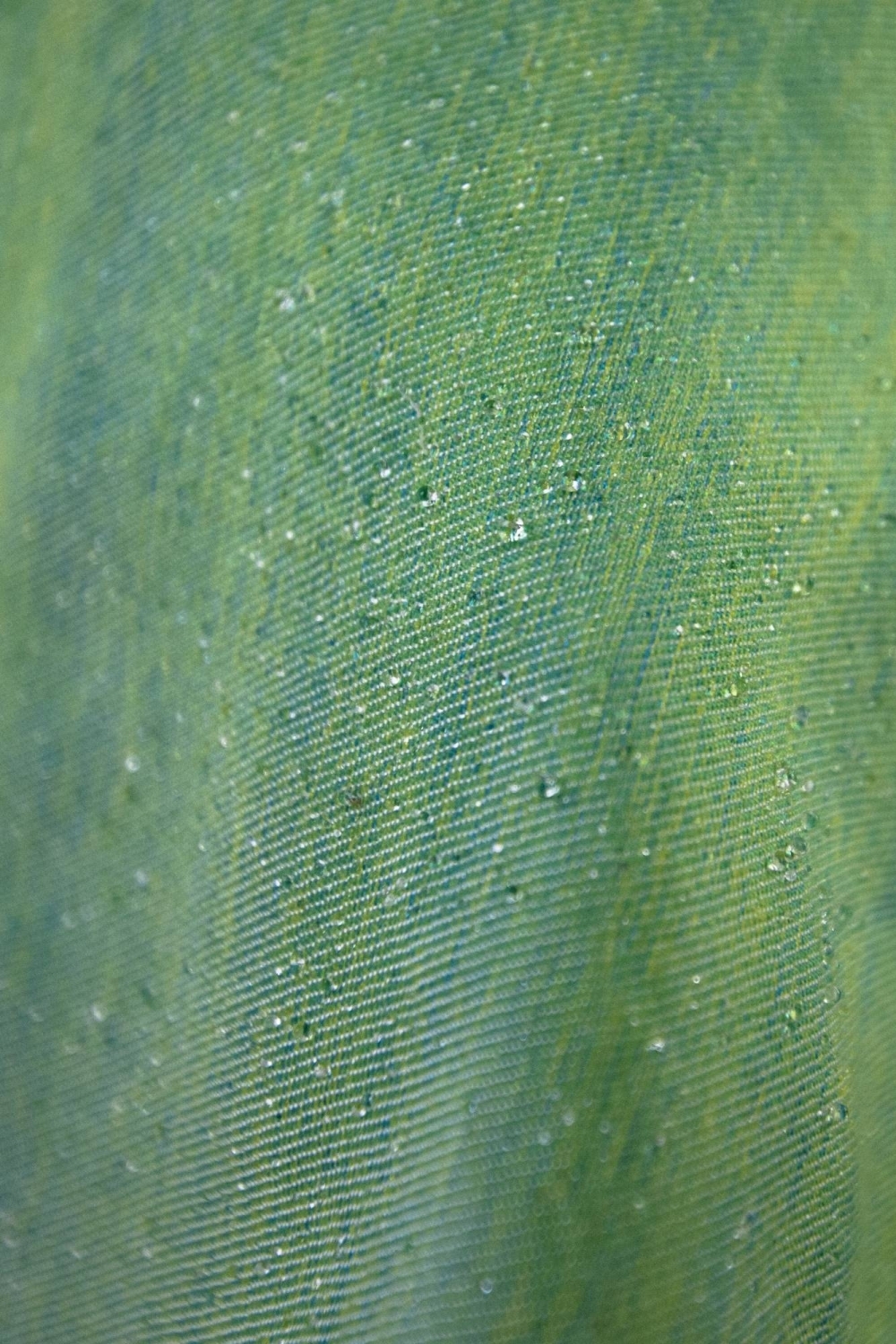
A PFAS-free textile developed by Japanese designer Jun Kamei modeled after the structure of the lotus plant, the leaves of which are known for their ability to repel water drops.
| Courtesy of Amphico
But a sea change is definitely happening. Gore-tex itself has developed a PFAS-free membrane in collaboration with Patagonia called ePE. Patagonia has also declared that it will phase out the use of PFAS in all of its membranes by 2025.
Meanwhile, Oregon-based footwear manufacturer Keen has actively promoted its efforts to drive out the compounds, turning them into a public awareness campaign. On its Japanese-language website, the firm even recommends that people watch the 2019 U.S. movie “Dark Waters,” a legal thriller about a lawyer fighting PFAS pollution.
In Japan, Montbell said by email that it is currently developing new materials that contain no PFAS, with stricter future regulations in mind.
The Osaka-based firm also said it has replaced the ingredients of the water-repellant spray it sells with PFAS-free materials, noting that it has called on customers to take good care of their outdoor products by regularly washing them and removing stains, as the non-PFAS spray’s oil repellent qualities are weaker than PFAS-containing sprays.
And major textile-maker Toray Industries announced in November that it has developed the PFAS-free water-repellent textile Deweight, which it is looking to market to apparel brands in time for the 2025 spring-summer season. It aims to achieve sales of over ¥1 billion ($6.76 million) in the fiscal year beginning April 2027.
The firm claims that clothes using the textile, developed entirely in-house from yarn and featuring a nanoscopically-designed uneven surface, would respond to “the desire to go out in style and comfort even on rainy days.”
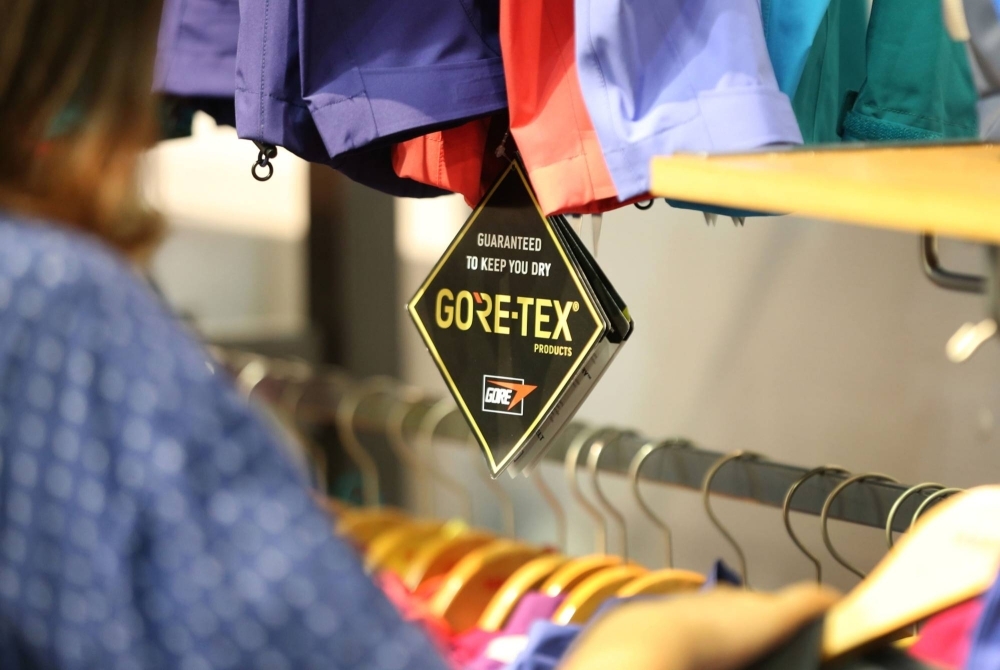
U.S.-based W.L. Gore & Associates, whose signature windproof and water-resistant membrane Gore-tex has been adopted by clothing manufacturers worldwide, says that it will work on eliminating PFAS chemicals that could pose an environmental threat.
| Bloomberg
Toray, which markets water-repellent textiles and fluorine fiber for industrial purposes globally, told The Japan Times it is taking a two-pronged approach on PFAS: For textiles, it is moving toward being PFAS-free — over 90% of its products that used the substances have been replaced — while for fibers it is asking regulators not to apply a widespread PFAS ban.
In terms of the latter, fluorinated materials are “indispensable in a wide range of sectors, used in products such as construction equipment, cars, airplanes, agricultural machinery, semiconductors and filters, as well as other mechanical and sealing parts,” the company said in an email.
Martin Flora, founder and president of global business development at U.S.-based Green Theme Technologies, was in Japan last month for business meetings. He says the textile firms he visited were very receptive and interested in the firm’s PFAS-free finishing technology.
GTT markets a patented, water-free, oil-based technology to apply durable water-repellent chemistry directly onto fabrics. The firm’s technology avoids water pollution and performs better than other substitutes still using traditional water-based methods, he claims. Zipper-maker YKK has recently launched a line of water-repellent zippers using GTT’s technology.
Flora says, however, that Japan’s textile industry, which is known for its top-quality products, is also very traditional and slow to embrace new manufacturing styles.
“It’s the culture of tradition and excellence that has created great Japanese products,” Flora says. “At the same time, now that it’s a global market, Japan has to move faster. … And unless Japan starts thinking globally, they are going to fall farther and farther behind, because they are behind in PFAS — way back.”
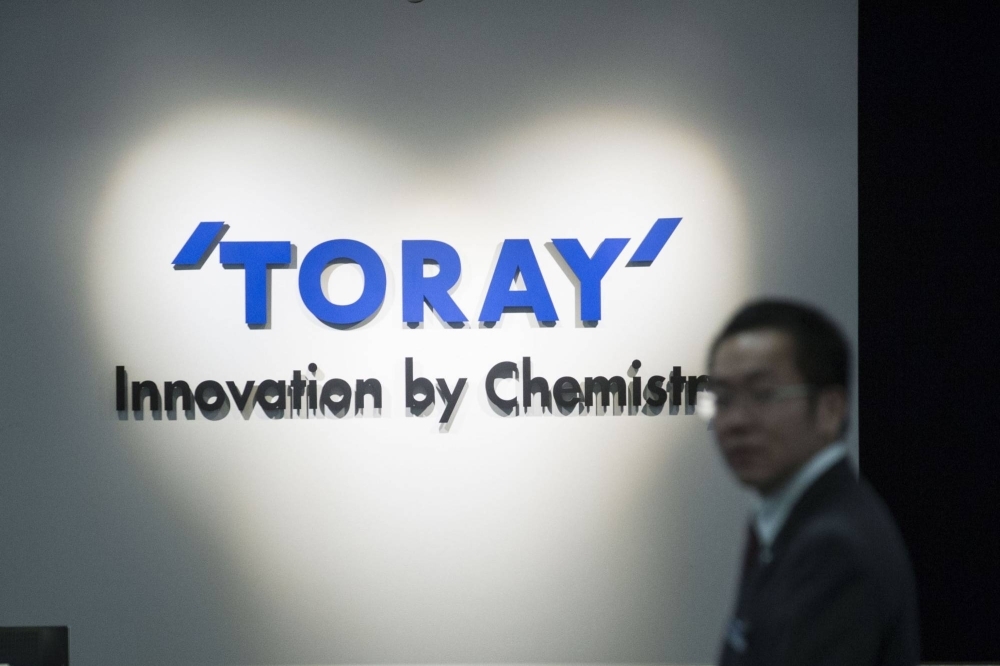
Toray Industries announced in November that it has developed the PFAS-free water-repellent textile Deweight, which it is looking to market to apparel brands in time for the 2025 spring-summer season.
| Bloomberg
In fact, corporate Japan has made a coordinated effort across sectors to oppose the comprehensive PFAS ban being considered by the European Chemicals Agency. During a six-month consultation process that ended in late September, the agency received over 5,600 comments from companies, organizations and individuals, out of which ones from Japan totaled 938, making Japan the third-biggest contributor in terms of comments, after Sweden and Germany.
Comments from Sweden, however, were mostly positive about the ban, making Japan the No. 2 force against it — and by some distance — according to ChemSec, an environmental nonprofit based in Sweden.
Toray’s stance on PFAS for its fiber business is in line with that of the Conference of Fluoro Chemical Product Japan, which coordinated the opposition to the PFAS ban. Toray differentiates “specific PFAS” designated by the Stockholm Convention — PFOS, PFOA and PFHxS — from the rest of the PFAS family.
“We are concerned that the move to tighten regulations on specific PFAS will lead to a perception that ‘all PFAS, including polymers such as PTFE, are hazardous and should not be used,’” Toray says.
Some Japanese clothing and footwear brands are staying ahead of the curb by joining third-party certification programs, such as ones by Zero Discharge of Hazardous Chemicals (ZDHC) and Bluesign.
The 320 signatories of ZDHC, a nongovernmental organization that works to eliminate harmful chemicals from the fashion industry’s global supply chain, include Japanese firms such as Uniqlo operator Fast Retailing.
Bluesign labels, meanwhile, are given to chemical suppliers, manufacturers, brands and retailers involved in the textile trade meeting certain ecological standards. Shoe manufacturer Asics is one of the partners of Bluesign.
“Many Japanese outdoor brands have pledged to stop using PFAS (materials) and water-repellent technologies using PFAS, but making sure that they live up to the pledges will be extremely challenging,” said Suguru Kubo, an official at WWF Japan involved in sustainable textile industry projects. “Third-party accreditation could be helpful in that regard.”

